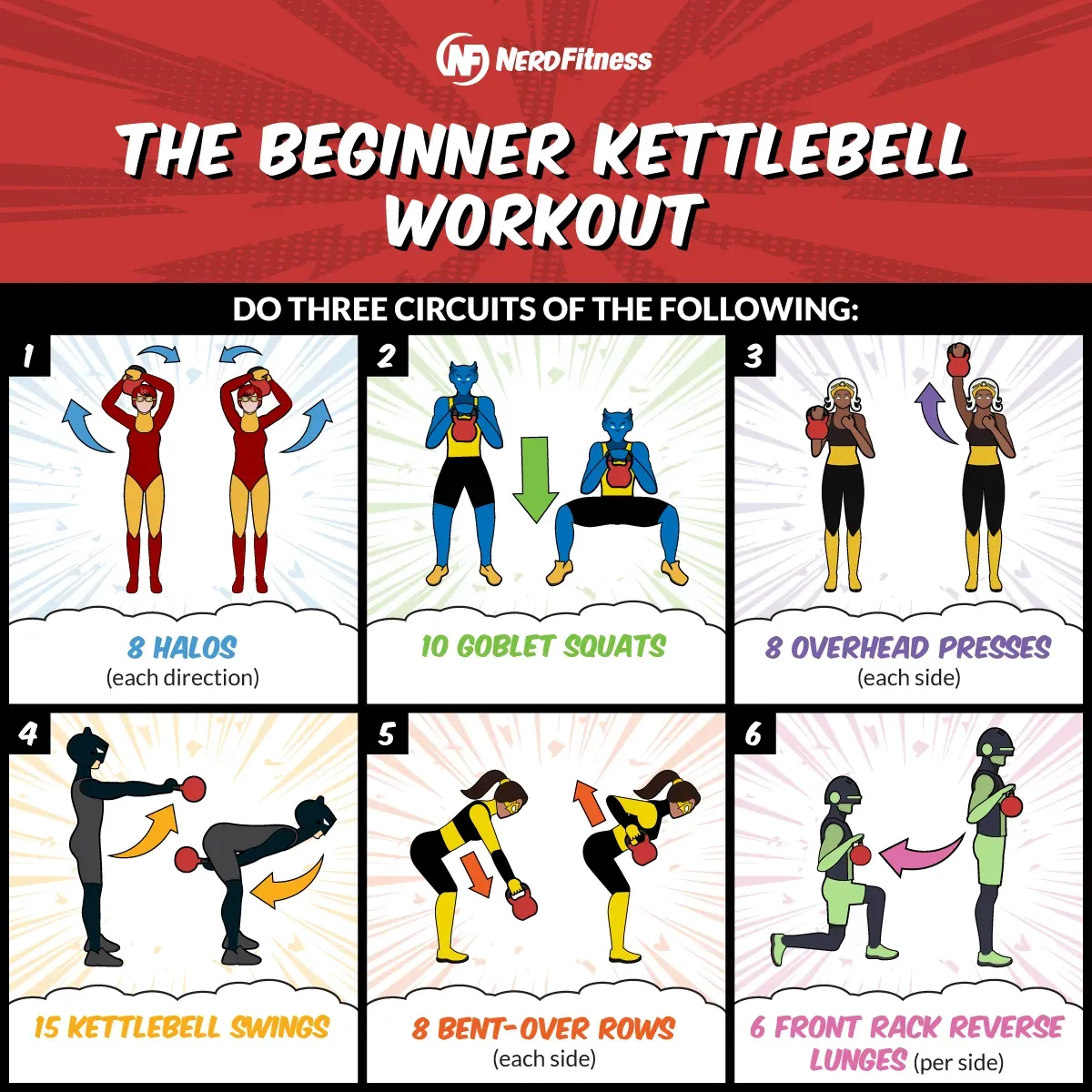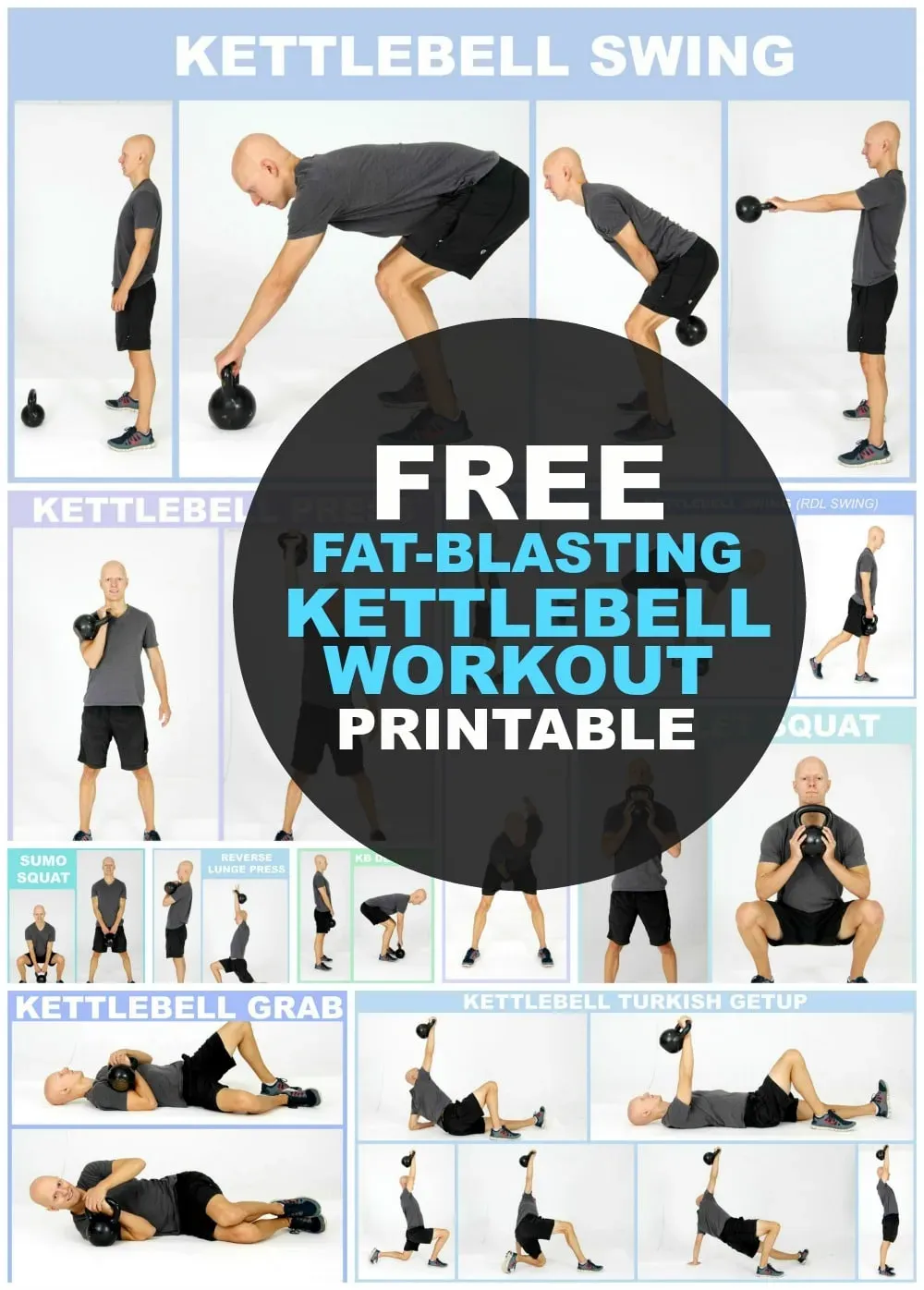Table of Contents
Thinking about getting into shape but the gym feels like a puzzle and those fancy machines look intimidating? Maybe you've seen someone swinging a cannonball with a handle and thought, "What in the world is that?" That, my friend, is a kettlebell, and it's one of the most effective, no-nonsense tools you can use to build strength, boost cardio, and get a serious workout without needing a ton of space or complicated gear. But where do you even start? Just grabbing one and swinging it around isn't the smartest move, trust me. That's where a proper **kettlebell workout plan beginners** guide comes in handy. We're not talking about some crazy, circus-act routine. We're talking about laying the groundwork. This isn't about becoming an instant expert, it's about learning the fundamental movements safely and effectively. We'll walk you through the absolute basics, help you put together a simple plan you can actually follow, point out the common rookie mistakes to steer clear of, and give you a roadmap for what comes next. Ready to ditch the confusion and pick up the bell? Let's get swinging, carefully.
Why a Kettlebell Workout Plan Works for Beginners

Why a Kettlebell Workout Plan Works for Beginners
It's Not Rocket Science, It's Just Gravity
Look, starting a fitness routine can feel overwhelming. There are a million machines, free weights, bands, balls... it's enough to make you want to just go home and watch TV. But a **Why a Kettlebell Workout Plan Works for Beginners** approach cuts through the noise. A kettlebell is just one piece of equipment. It's simple, portable, and incredibly versatile. You don't need a degree in exercise science to figure out a basic swing or goblet squat. The design of the kettlebell, with its handle and offset weight, naturally encourages movements that engage multiple muscle groups at once. This means you get more bang for your buck in less time, which is pretty appealing when you're just trying to build a consistent habit.
Building Foundational Strength, Fast(ish)
Unlike isolating muscles on machines, kettlebell exercises, even the beginner ones, are compound movements. Think of the kettlebell swing – it's not just working your shoulders or your legs; it's a full-body effort involving your hips, core, back, and grip. This functional strength translates better to real life, like carrying groceries or lifting a heavy box. A well-structured kettlebell workout plan for beginners focuses on these core movements, helping you build a solid foundation of strength and coordination surprisingly efficiently. You'll feel muscles you didn't even know you had, which, while sometimes sore, is a good sign things are actually happening.
- Simple, one-tool training
- Engages multiple muscles simultaneously
- Builds functional, real-world strength
- Efficient use of workout time
- Less intimidating than a full gym
Getting Started: Basic Kettlebell Exercises for Beginners

Getting Started: Basic Kettlebell Exercises for Beginners
First Swings: Where Do You Even Begin?
Alright, you've got your kettlebell (hopefully a light one to start – don't be a hero yet). Now what? Jumping straight into those dynamic swings you see on Instagram is a recipe for a sore back, not progress. The real starting point for any effective **Getting Started: Basic Kettlebell Exercises for Beginners** plan is mastering a few fundamental, less flashy movements. Think of these as your building blocks. These exercises focus on teaching you how to hinge at the hips properly and brace your core, which are crucial skills for everything else you'll do with a kettlebell. We're talking about controlled movements where you can really feel what your body is doing.
- The Kettlebell Goblet Squat
- The Kettlebell Deadlift
- The Kettlebell Halo
- The Kettlebell Romanian Deadlift (Single Leg)
Building Your Simple Kettlebell Workout Plan for Beginners

Building Your Simple Kettlebell Workout Plan for Beginners
Putting the Pieces Together: Your First Routine
so you've practiced those foundational movements – the goblet squat, the deadlift, maybe the halo. You're not wobbling like a newborn giraffe anymore. Great! Now, how do you string these together into something that actually resembles a **Building Your Simple Kettlebell Workout Plan for Beginners**? Forget the fancy splits or hour-long sessions you see online. For now, keep it simple. We're talking about 2-3 sessions a week, maybe 20-30 minutes each. The goal is consistency and reinforcing good form, not crushing yourself into oblivion. Pick 3-4 exercises you feel comfortable with from the basics we covered. Do a few sets of each, focusing purely on moving well. Don't chase reps or weight right now; chase quality. Think of it like learning to ride a bike – you start slow, maybe with training wheels (those basic moves), before you try any jumps.
Sample Session Structure: Keep it Manageable
A simple way to structure your beginner kettlebell session is like this: Start with a quick warm-up (maybe some arm circles, leg swings, getting the blood moving). Then, move into your chosen exercises. A common approach is to do circuits: perform one set of each exercise back-to-back with minimal rest between exercises, then rest for 60-90 seconds after completing the circuit, and repeat for a set number of rounds (say, 3-4 rounds to start). Alternatively, you can do straight sets: complete all sets for one exercise before moving to the next, resting 60-90 seconds between sets. The circuit method is often more time-efficient and adds a bit of a cardio element, which is a nice bonus for a **kettlebell workout plan beginners** can stick to. Just pick one method and stick with it for a few weeks to see how you feel.
Here's a dead simple example of a beginner circuit:
- Kettlebell Goblet Squat: 8-10 reps
- Kettlebell Deadlift: 8-10 reps
- Kettlebell Halo: 5 reps each direction
- Rest 60-90 seconds
- Repeat 3-4 times
Avoiding Beginner Blunders: Common Kettlebell Mistakes

Avoiding Beginner Blunders: Common Kettlebell Mistakes
Swinging Like a Door, Not Hinging Like a Human
you see those videos of people swinging the kettlebell way up high? Looks cool, right? Except for beginners, one of the biggest pitfalls is turning the swing into a glorified arm lift or, worse, a squat. The kettlebell swing is a hinge movement, driven by your hips, not your lower back or your arms. It's like snapping your hips forward powerfully, letting that force propel the bell. If you're feeling it mostly in your lower back, you're doing it wrong. You're probably bending too much at the waist instead of pushing your hips back like you're trying to close a stubborn car door with your backside. This is where practicing that deadlift and focusing on the hip hinge *before* you swing heavier comes in. Your back will thank you, eventually.
Going Heavy Too Fast: Ego Lifting with an Iron Ball
We get it, you want to feel strong. You see someone swinging a monster bell and think, "Yeah, I can do that." Spoiler alert: you probably can't, not safely, not yet. Starting with a kettlebell that's too heavy is a guaranteed way to reinforce bad form and invite injury. Your **kettlebell workout plan beginners** should prioritize learning the movement patterns with a lighter weight. You should be able to control the bell through the entire range of motion without fighting it. If the bell is pulling you around or you have to strain just to get it off the floor, it's too heavy. There's zero shame in starting light; the shame is in getting hurt because you wanted to impress your cat.
- Swinging from the back, not hinging from the hips.
- Using a weight that is too heavy for proper form.
- Rounding the back during lifts (deadlifts, swings).
- Neglecting core engagement – your abs aren't just for show.
- Trying complex movements before mastering the basics.
Ignoring Your Core: It's More Than Just Abs
Many beginners think lifting is just about the muscles doing the visible work – the legs in a squat, the arms in a press. With kettlebells, especially in dynamic movements like the swing, your core is the unsung hero. It stabilizes your spine, transfers force from your lower body to your upper body, and prevents you from looking like a floppy noodle. Failing to brace your core turns powerful movements into wobbly, inefficient ones that put strain on your joints and back. Before you initiate a movement, take a breath, brace your abs like you're about to get punched (gently), and keep that tension throughout the exercise. This isn't just about aesthetics; it's fundamental to safe and effective kettlebell training.
What's Next? Progressing Your Kettlebell Workout Plan

What's Next? Progressing Your Kettlebell Workout Plan
Knowing When It's Time to Level Up
So, you've been consistently following your simple kettlebell workout plan for beginners for a few weeks now. Those goblet squats don't feel like a Herculean effort anymore. The deadlift feels solid, and you're not fighting the bell. You're probably thinking, " this is getting... easy?" That's the signal. If you can comfortably complete all the prescribed reps and sets with good form for every exercise in your routine, and it doesn't feel challenging, you've officially outgrown your training wheels. Don't get complacent just because you nailed the basics. The point of a beginner plan is to build competence, not to stay there forever. It's like learning to drive in an empty parking lot – eventually, you need to hit the road, albeit cautiously.
How to Actually Progress Your Kettlebell Training
Alright, you're ready to move past the absolute beginner stage. How do you do that without suddenly attempting a one-arm snatch with a bell twice your weight? There are a few sensible ways to make things harder. The most obvious is increasing the weight. If you started with an 8kg bell, maybe grab a 12kg for your next session. Don't jump too high too fast; small increments are key. Another method is increasing the number of reps or sets you do. If you were doing 3 sets of 8 goblet squats, try 3 sets of 10, or even 4 sets of 8. You could also decrease the rest time between your sets or circuits to add a conditioning challenge. Finally, you can introduce slightly more complex movements, but only after those foundational swings and squats are dialed in. Think about adding a basic two-hand swing or a clean, but maybe practice the movement pattern without the bell first.
Ways to Progress Your Kettlebell Plan:
- Increase the weight of the kettlebell (small jumps!).
- Do more repetitions per set.
- Add more sets to your workout.
- Reduce the rest time between sets or circuits.
- Introduce slightly more complex exercises (like the two-hand swing), but learn them slowly and with a light weight.
- Focus on controlled negative movements (lowering the weight slowly).
Swinging Forward: Your Kettlebell Journey Begins
So, there you have it. Starting with a kettlebell isn't some dark art reserved for gym fanatics. It's about picking up a simple tool, learning a few key moves, and sticking to a basic plan. We've covered the ground rules – safety first, mastering the foundational swing and goblet squat, putting together a routine that makes sense, and spotting those beginner pitfalls before they trip you up. This isn't a magic bullet, and you won't look like a superhero overnight. But consistently following a solid kettlebell workout plan as beginners do lays the groundwork for real, noticeable progress. The bell is just waiting. Pick it up, respect the process, and keep swinging.